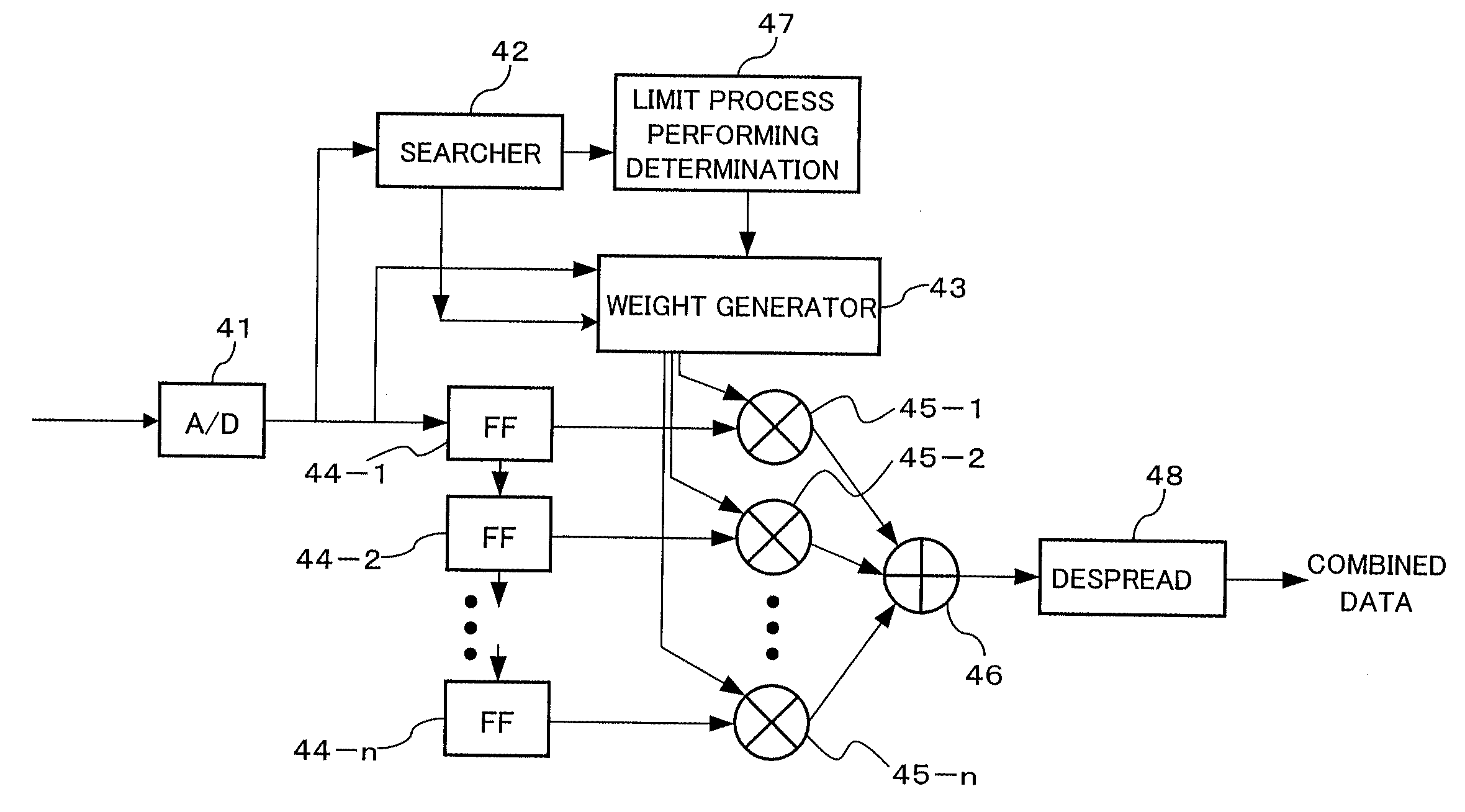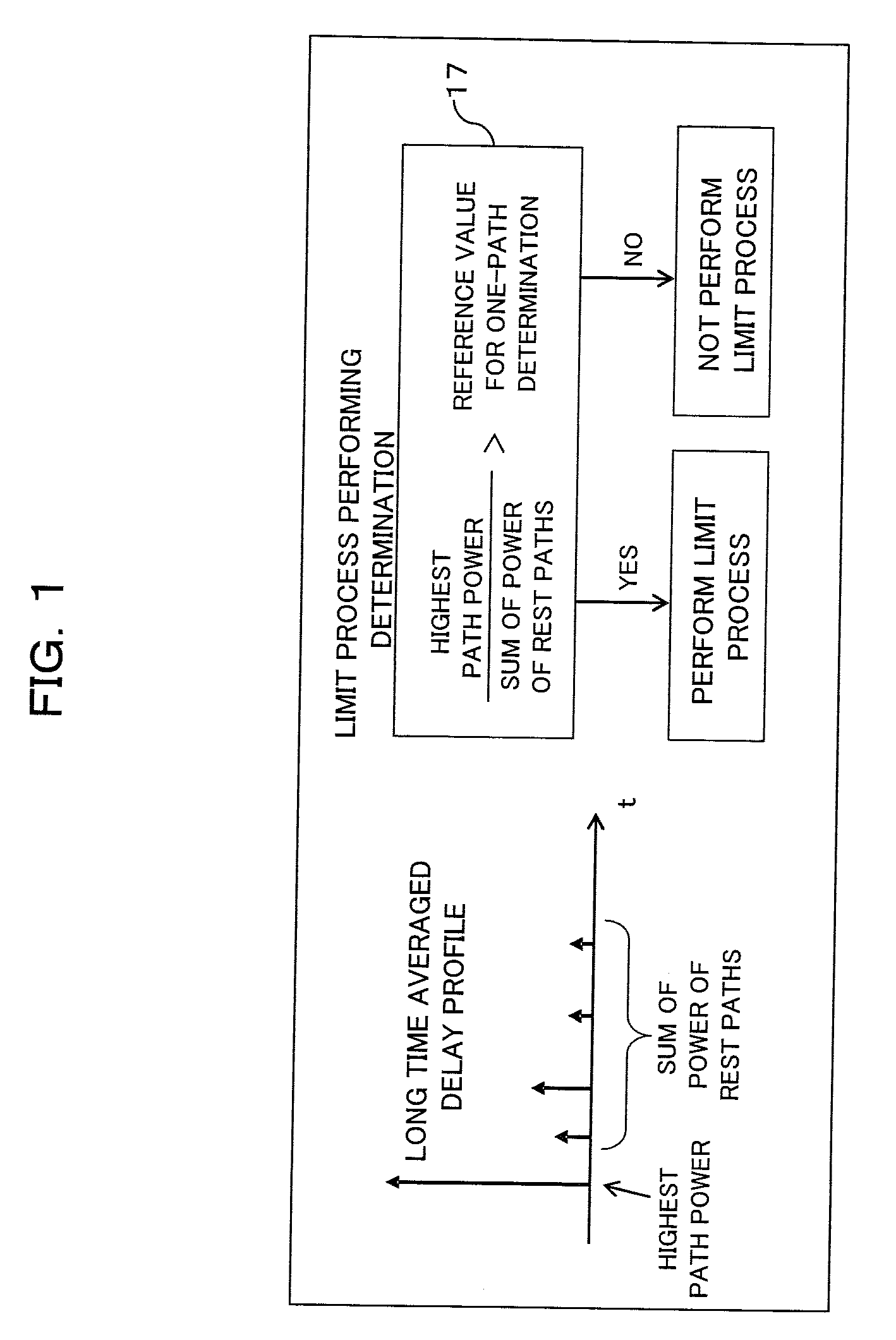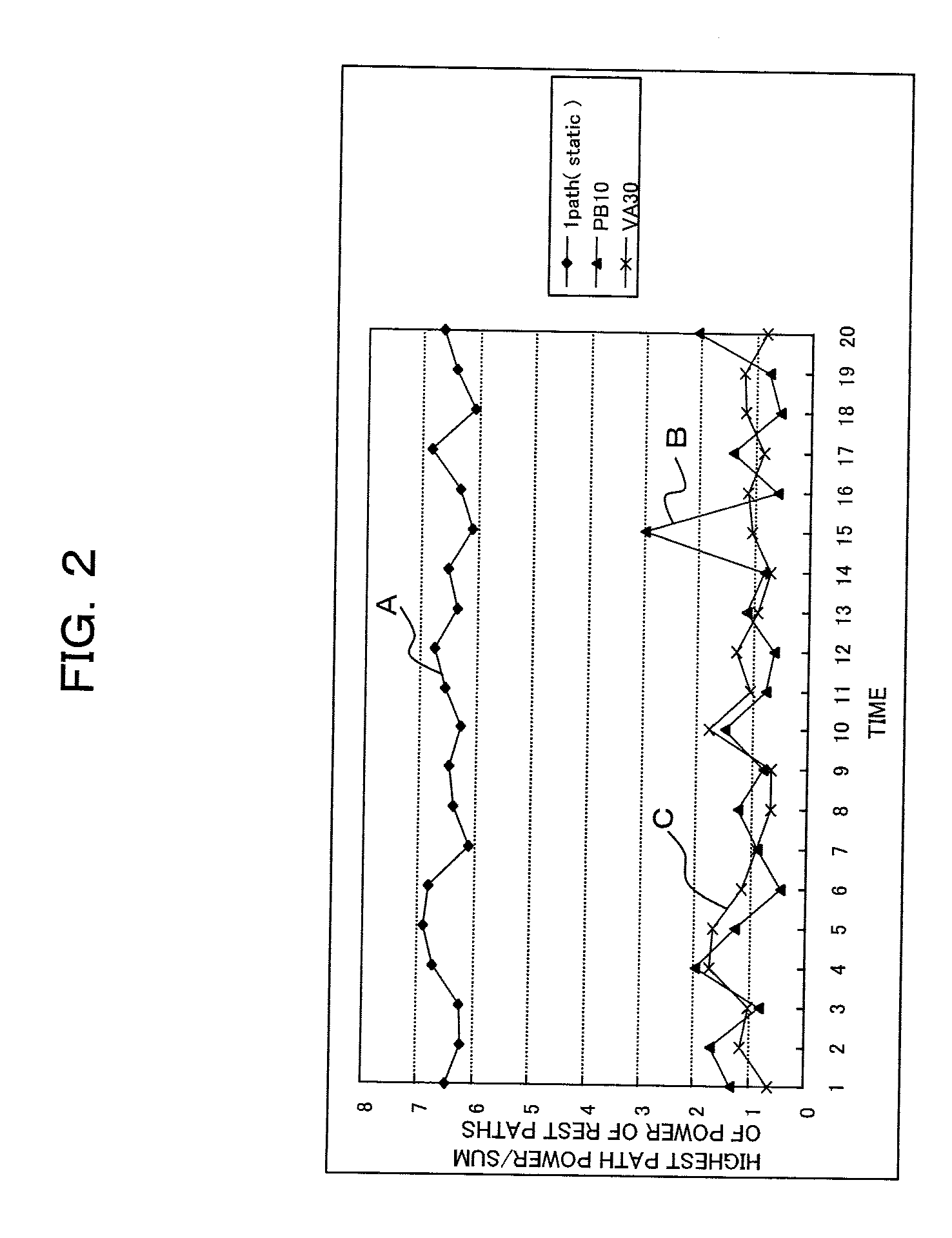Receiver and Reception Processing Method
a processing method and reception technology, applied in the field of reception processing methods, can solve the problems of reducing affecting the performance of the receiving process, and affecting the performance of the limit process, so as to reduce the degradation of performance in the multi-path environment and improve the performance in one-path environmen
- Summary
- Abstract
- Description
- Claims
- Application Information
AI Technical Summary
Benefits of technology
Problems solved by technology
Method used
Image
Examples
first embodiment
[A] A First Embodiment
[0047]The above mentioned problem can be solved by selectively performing a limit process depending on a given propagation environment. For example, instead of being always performed, the limit process is performed when a given propagation environment is determined to be one-path environment after the long-time measurement of the environment. This can improve performance in one-path environment while reducing performance degradation in multi-path environment. Note that an overflowing path from the physically combinable number of paths (N) (for example, the N+1-th or later path when arranged in the order of decreasing correlation) is excluded from the combining (this exclusion is different process from the limit process).
[0048]Whether a given environment is one-path or not can be determined based on the ratio between the highest path power (power of path whose power is the highest) and the sum of power of the rest of paths in the delay profile measured for a suf...
second embodiment
[B] A Second Embodiment
[0065]FIGS. 5 to 7 illustrate the limit process performing determination process in a CDMA receiver in accordance with a second embodiment. This process is a modification of the process of the limit process performing determination by the limit process performing determination part 17 shown in FIGS. 1 and 3, and uses an equalizer.
[0066]As shown in FIG. 5, the limit process is performed when the difference between the gain of the equalizer of the CDMA receiver and the gain of the RAKE receiver is lower than a predetermined reference value (for example, 0).
[0067]FIG. 6 shows an example of configuration for calculating the difference of the gains. In this configuration, a known signal (pilot signal) is input to an equalizer 18 and a RAKE receiver 19. S / N calculators 20 and 21 calculate (estimate) the S / N ratios of the output from the equalizer 18 and RAKE receiver 19, respectively. An S / N difference calculator 22 calculates the difference between the S / N ratios. ...
third embodiment
[C] A Third Embodiment
[0078]FIG. 9 is a block diagram of a equalizer in a CDMA receiver in accordance with a third embodiment. The equalizer shown in FIG. 9 is applicable to a receiver system of a wireless terminal such as mobile phone, and includes, for example, an A / D converter 41, a searcher 42, a weighting factor generator 43, delay circuits (FF) 44-1 to 44-n (n is an integer greater than 1), multipliers (45-1 to 45-n), an adder 46, a limit process performing determination part 47, and a despreader 48.
[0079]As seen from FIG. 9, this equalizer has generally the similar configuration as the RAKE receiver shown in FIG. 3, and is configured to be operable as equalizer and RAKE receiver for a received signal before being despread.
[0080]The A / D converter 41 converts a signal (analog baseband signal) that is received by a receiving antenna (not shown) and subjected to necessary radio reception processes including low-noise amplification, frequency conversion (down conversion), automati...
PUM
 Login to View More
Login to View More Abstract
Description
Claims
Application Information
 Login to View More
Login to View More - R&D
- Intellectual Property
- Life Sciences
- Materials
- Tech Scout
- Unparalleled Data Quality
- Higher Quality Content
- 60% Fewer Hallucinations
Browse by: Latest US Patents, China's latest patents, Technical Efficacy Thesaurus, Application Domain, Technology Topic, Popular Technical Reports.
© 2025 PatSnap. All rights reserved.Legal|Privacy policy|Modern Slavery Act Transparency Statement|Sitemap|About US| Contact US: help@patsnap.com



